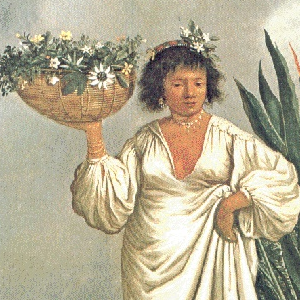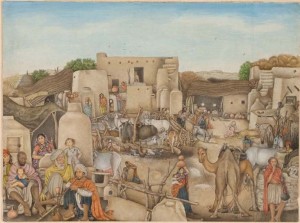Browse
Global Contact

Source
Mameluke with a basket of flowers, 1641
Albert Eckhout was the first European painter in Brazil. Eckhout was an official painter, hired by Johan Maurits van Nassau-Siegen, a prince of the House of Orange.

Review
Africa Online Digital Library
The site’s stated goal is the implementation of emerging best practices in the “American digital library community” in an African context, and it does not disappoint. Indeed, the site demonstrates a rare combination of scholarly sophistication, ease of use, and broad appeal.
Source
The Village of Jeewah Moocuddum near Rania
This painting, entitled The village of Jeewah Moocuddum near Rania: William Fraser’s circle of village folk, his white stallion, and progeny, is one of many paintings comprising the Fraser Album.

Source
Pieter Cnoll, Batavian Senior Merchant
Painted by Jacob Coeman in 1665, this painting depicts Pieter Cnoll, his Eurasian wife Cornelia van Nijenrode, their two daughters, and two enslaved servants.

Review
Burke and Wills – Terra Incognita
Supplementary material is easy to follow and fairly extensive... Information is included on the background to the expedition, its historical context, biographies of those involved, the preparation for and events of the expedition, and its aftermath.
Review
International Dunhuang Project
The IDP, based at the British Library in London, is an international collaborative effort to catalog, conserve, and encourage research of Silk Road artifacts. This website, which currently displays around 20,000 digitized images of these artifacts, is one product of this larger effort.
Review
Japanese Old Photographs in Bakumatsu-Meiji Period
The site will be useful to instructors looking to add visual sources to enliven a discussion of Japanese history at this critical moment in which Japan confronted the threat of Western imperialism and embarked on its own urgent project of modernization.
Review
Australian Studies Resources
The wide assortment of material makes it useful for teaching many distinct themes relevant to world history.
Source
Japanese Nanbanjin Folding Screen
This byobu, or folding screen, was created by Kano Naizen ca. 1593-1603.

Review